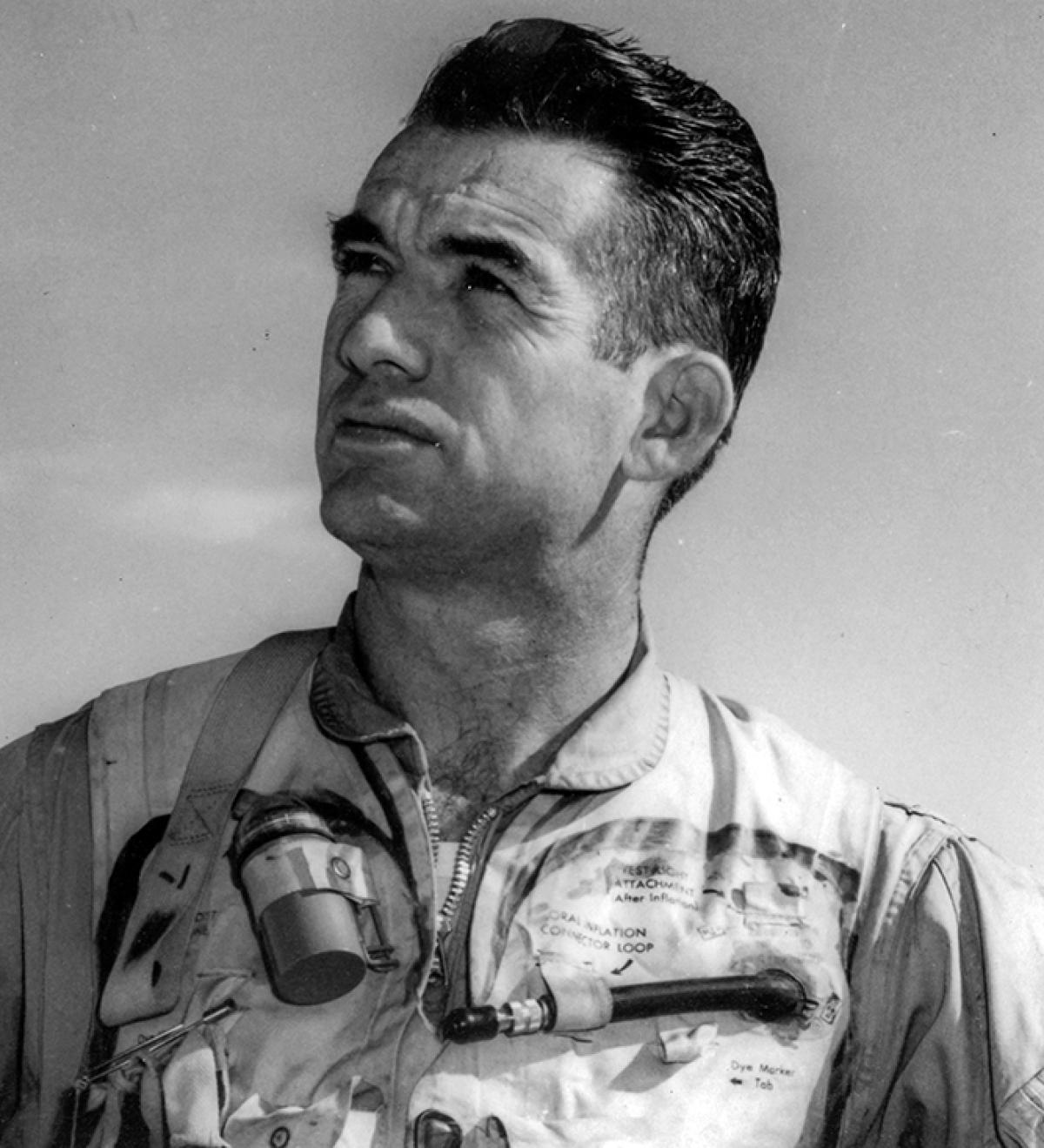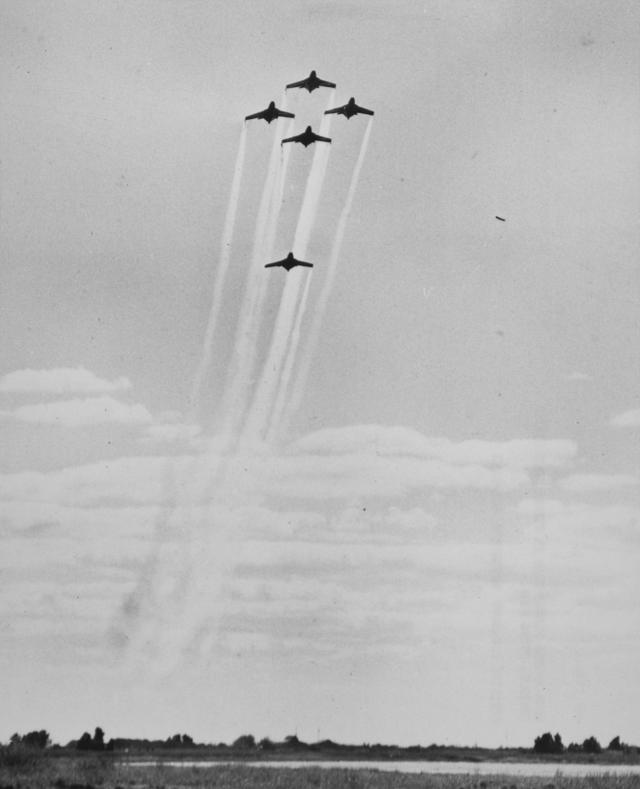In this U.S. Naval Institute oral history excerpt, Captain Hawkins speaks about his becoming the first man to perform a through-the-canopy ejection from a jet aircraft on 4 August 1953, when his aircraft, an F9F-6 Cougar of the Blue Angels, encountered trouble at 42,000 feet.
After enlisting in the Naval Reserve in April 1942, Hawkins went through cadet training in Texas prior to being designated a naval aviator and commissioned in January 1943. During World War II, as a fighter pilot in VF-31, he flew in combat from the light carriers USS Cabot (CVL-28) and Belleau Wood (CVL-24). In all, he shot down 14 Japanese aircraft. He became a regular Navy officer in 1946, subsequently serving as a floatplane pilot in the cruiser USS Portsmouth (CL-102). He had two tours with the Blue Angels flight demonstration team, sandwiched around Korean War duty in Fighter Squadron 101, which operated from the carrier USS Princeton (CV-37). As skipper of the Blue Angels in 1953 he made the first through-the-canopy ejection from a jet aircraft, an F9F-6 Cougar. Subsequently, interspersed with tours of shore duty, Captain Hawkins commanded Attack Squadron 46, served as air officer on board the USS Franklin D. Roosevelt (CVA-42), and commanded Air Group One and the oiler USS Caloosahatchee (AO-98). He became a programming specialist during the McNamara years in the Pentagon, and he had a satisfying tour as commanding officer of the U.S. Naval Air Station Atsugi, Japan. He retired in June 1973.
To read more about the Naval Institute Oral History Program, click here.




